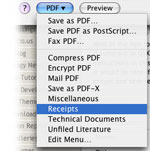Do not base key functionality of your software on closed, third-party libraries - you never know what the future holds.

When Adobe purchased Marcomedia the writing was on the wall for Flashpaper from the outset. Flashpaper was Macromedia's alternative to Adobe PDF for paper-based documents on the Internet. Unlike PDF which requires a dedicated reader application (e.g. Adobe Reader), Flashpaper turns print documents into easily consumable Flash animations. Not only is Flash just as (or even more) ubiquitous as PDF, it integrates better with a user's web-experience. Consequently from Adobe's perspective letting Flashpaper live on as a potentially superior competitor to PDF on the web just did not make sense. Yet whilst this axe has been dangling above Flashpaper's head for quite some time, Adobe has only recently made it official; Flashpaper is dead, long live PDF.
This long coming announcement was a kick in the guts for businesses that have built their products on top of Flashpaper or use it for internal purposes. One bright point was that Scribd took the demise of Flashpaper as an opportunity to establish a competing product called iPaper. Whilst iPaper has some very interesting features (like integrated Google Adwords), it cannot operate 'within the firewall' on documents that are too sensitive for public release. Also iPaper's hosted architecture precludes it from being embedded into third party, redistributable applications.


